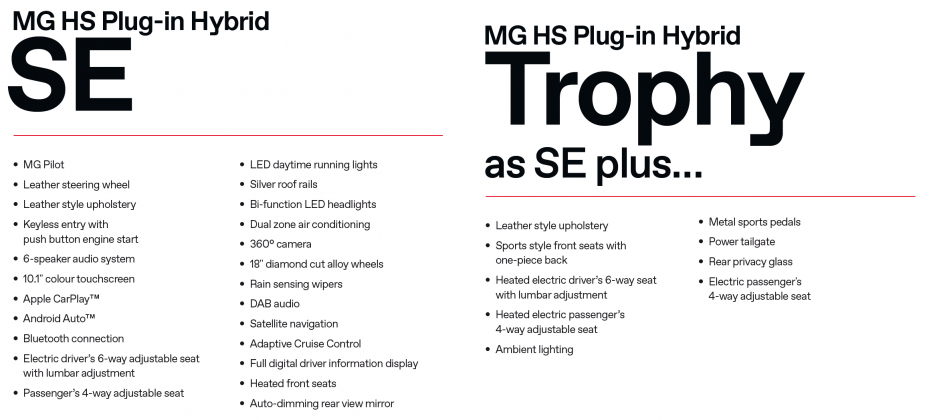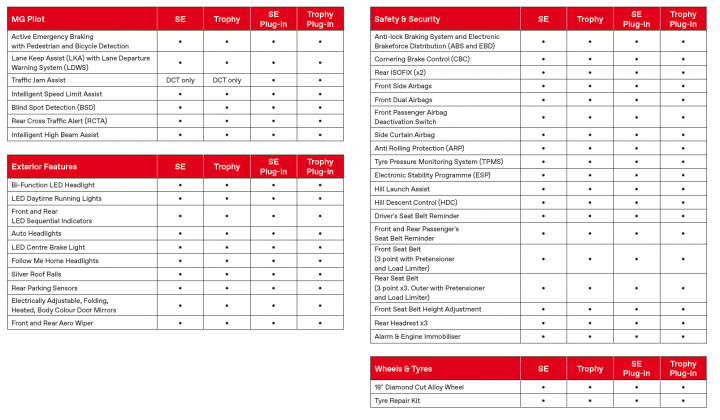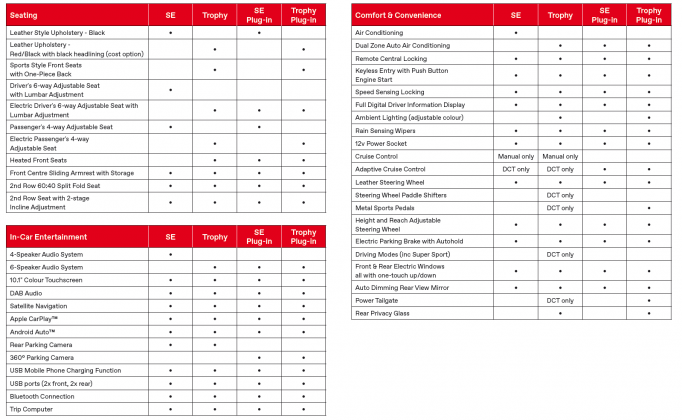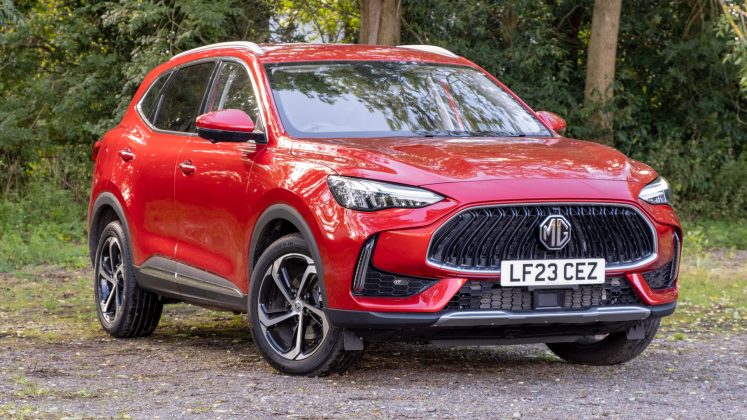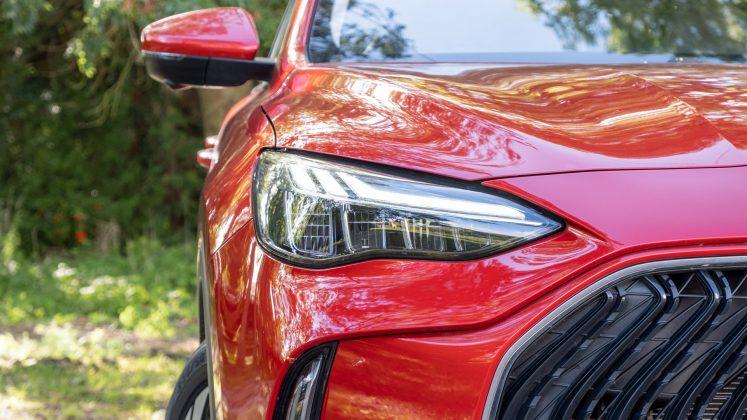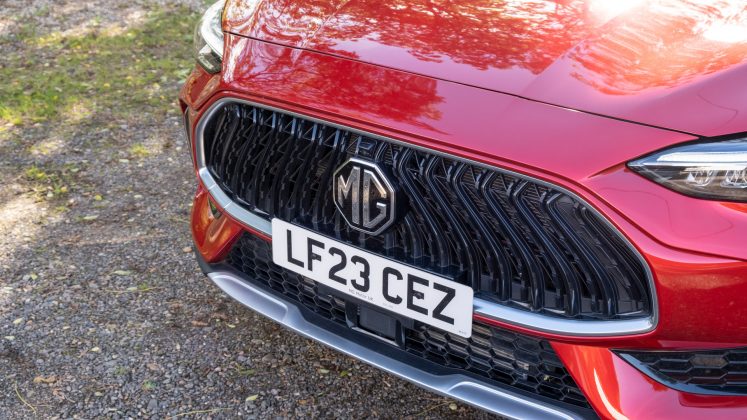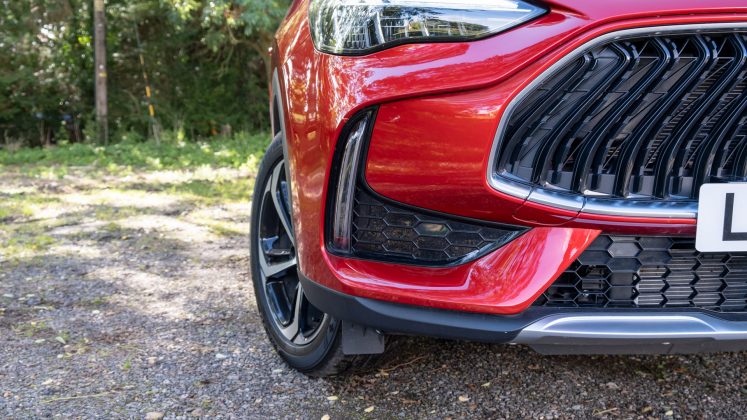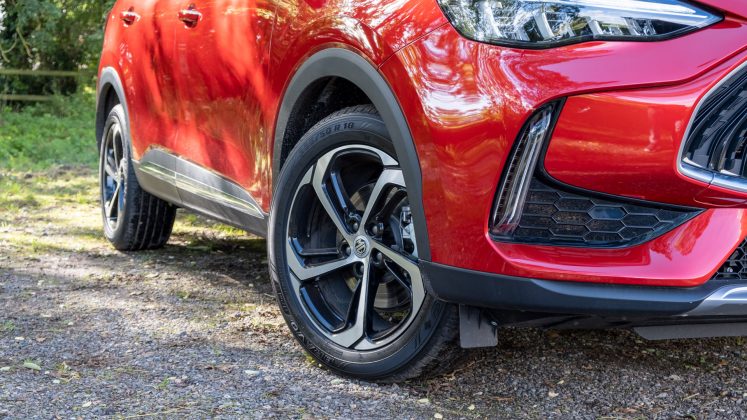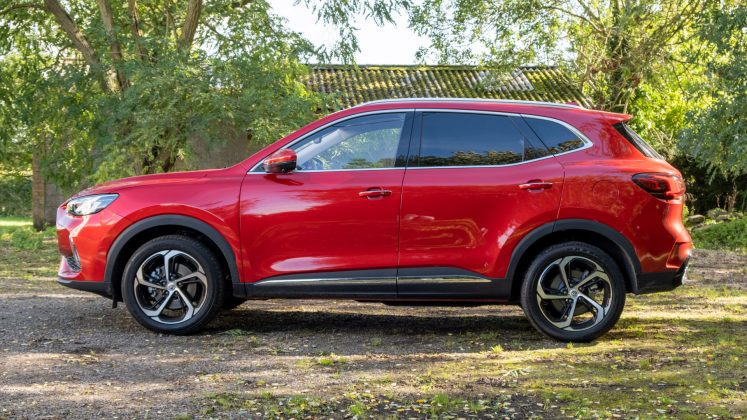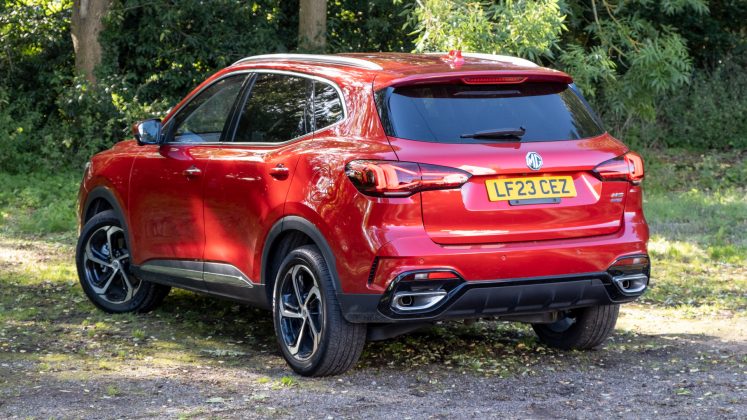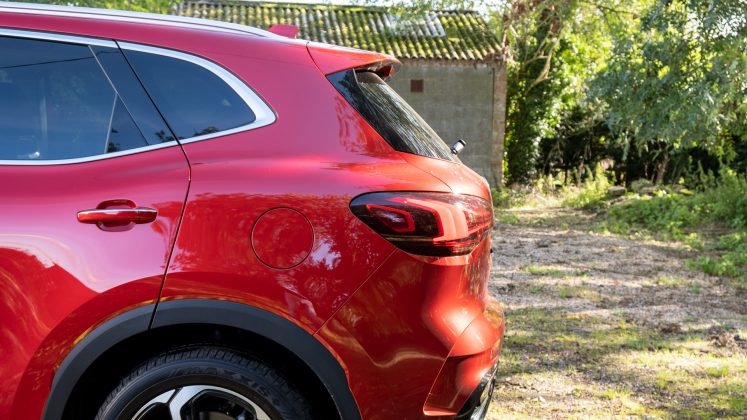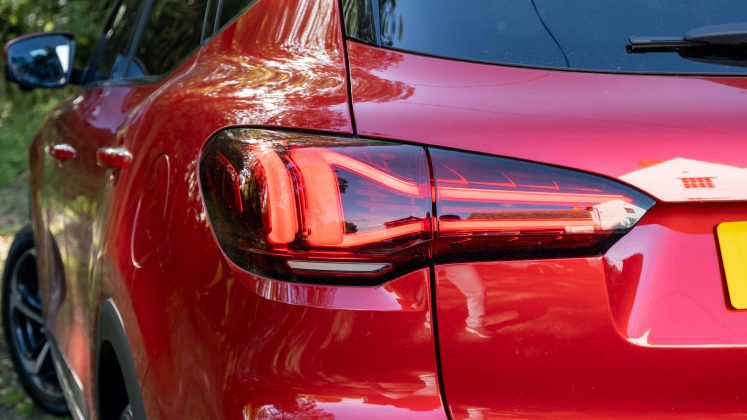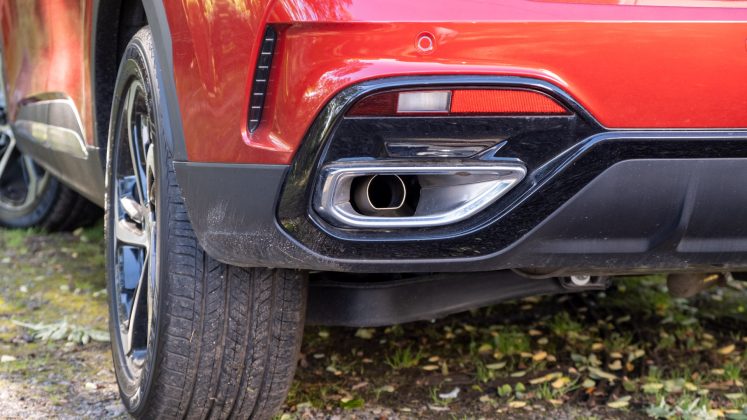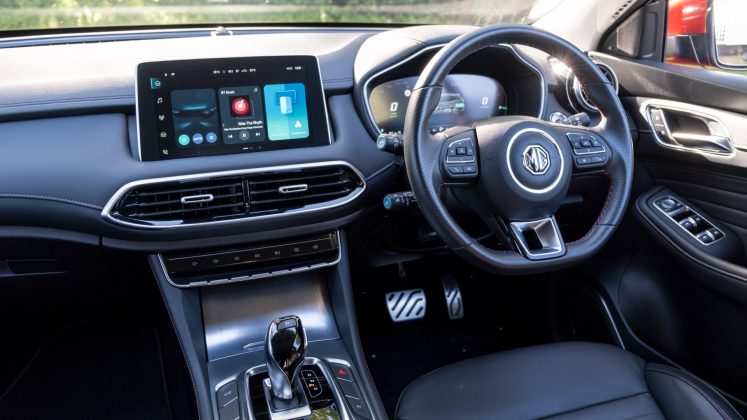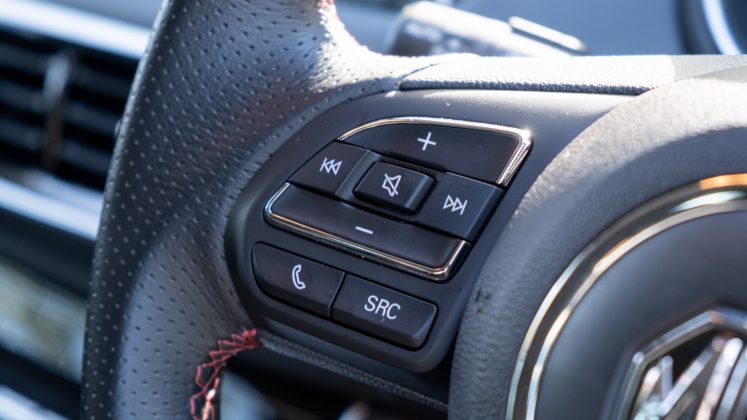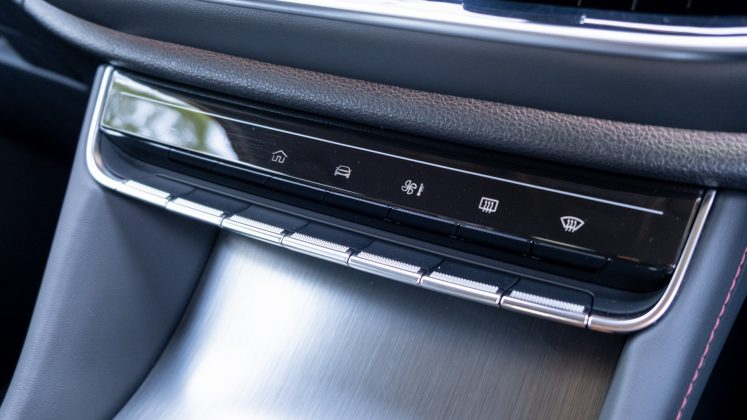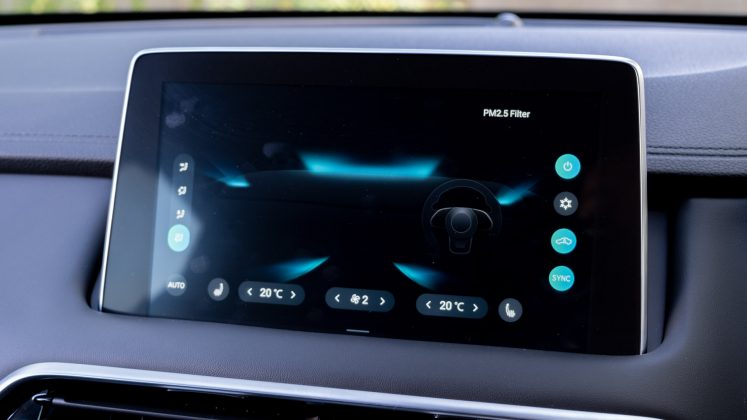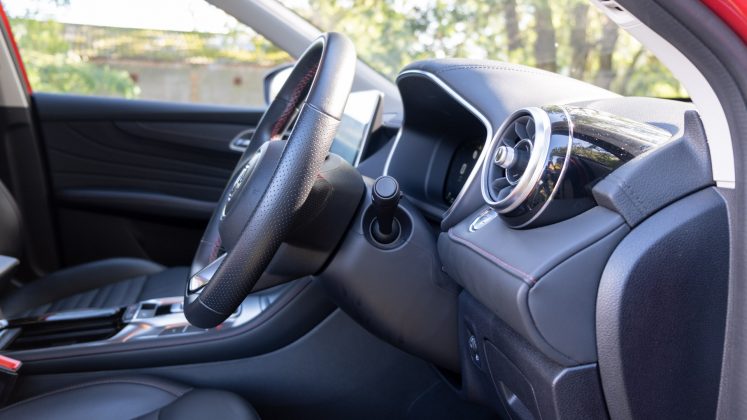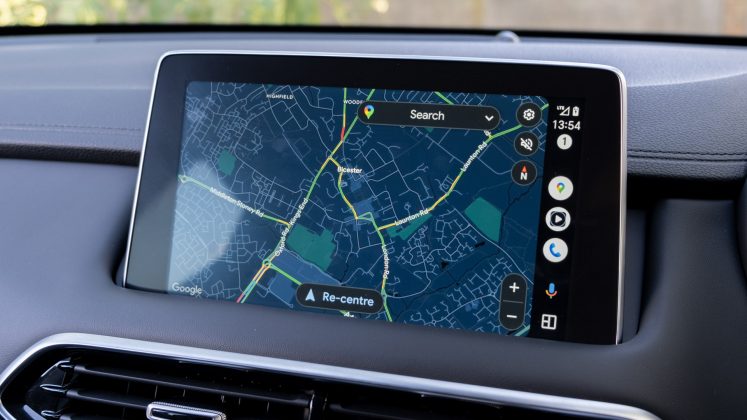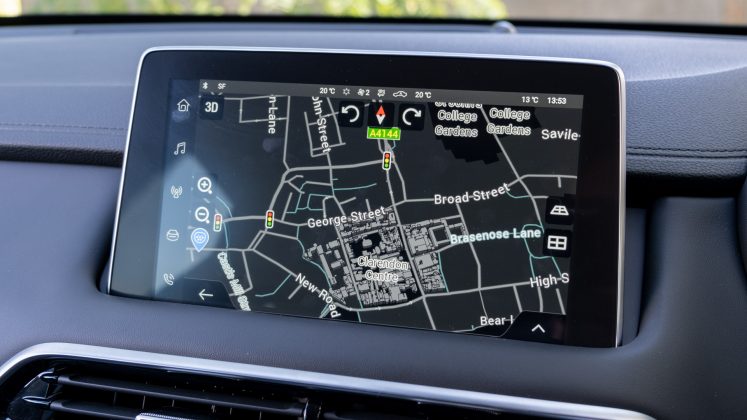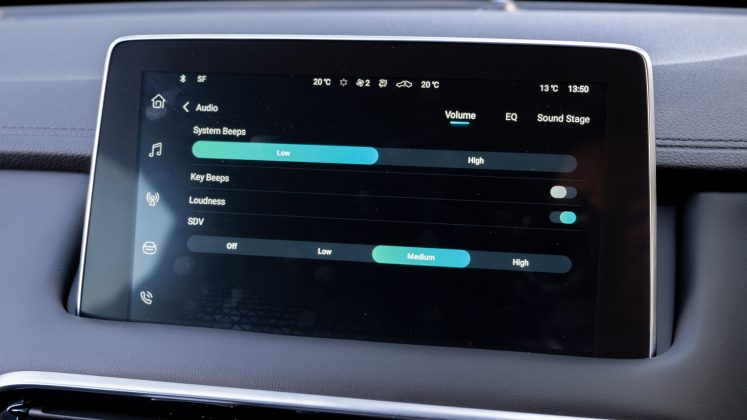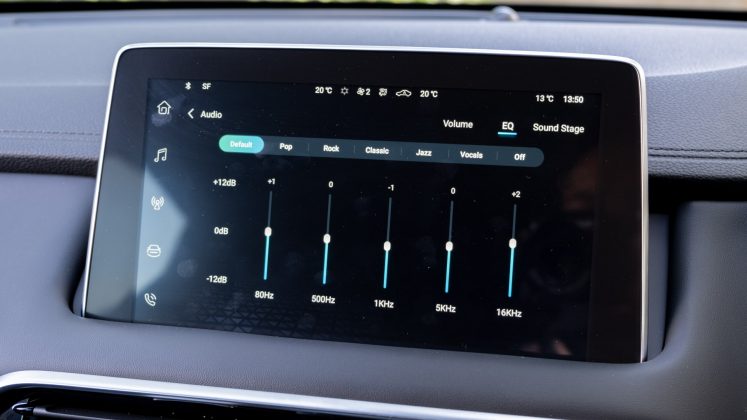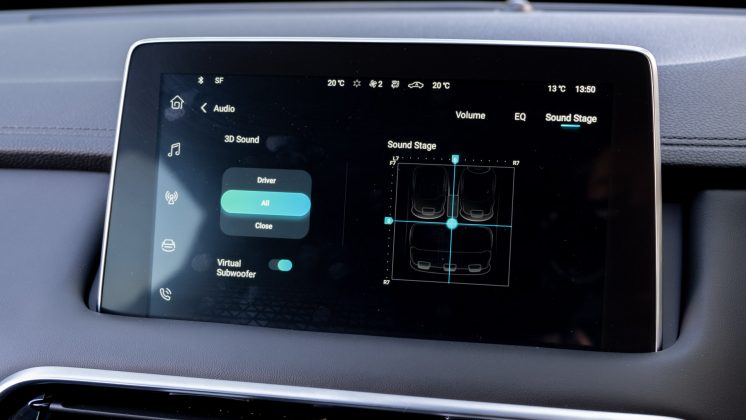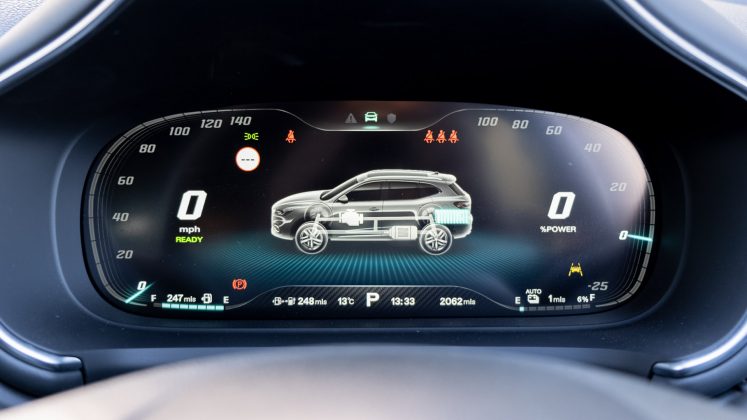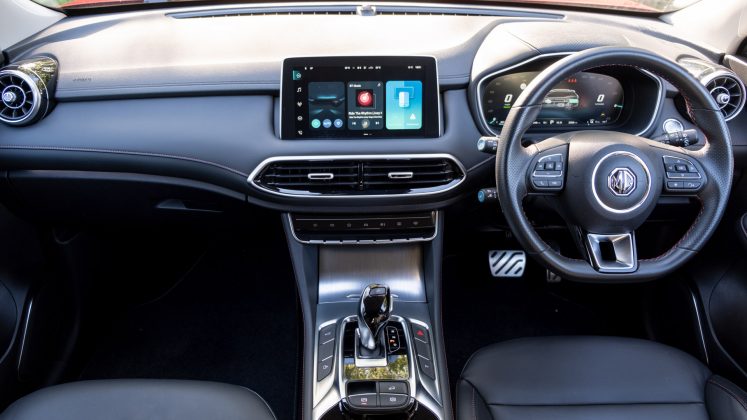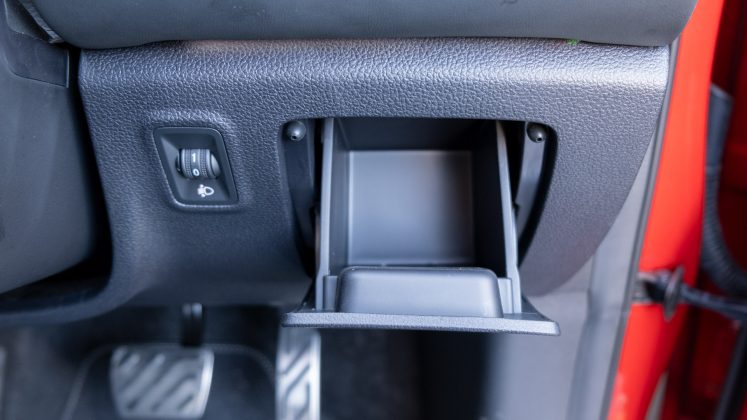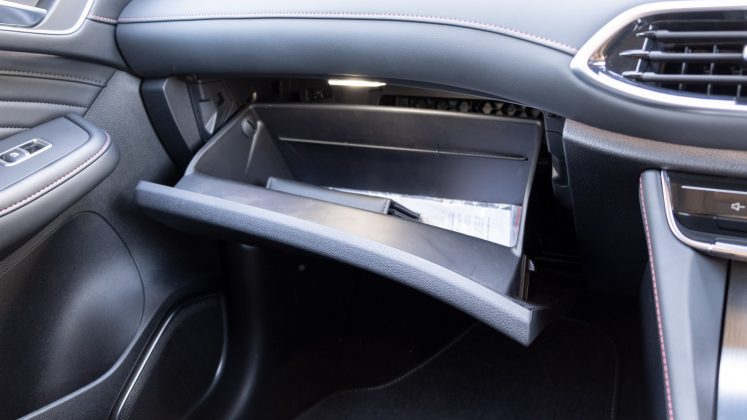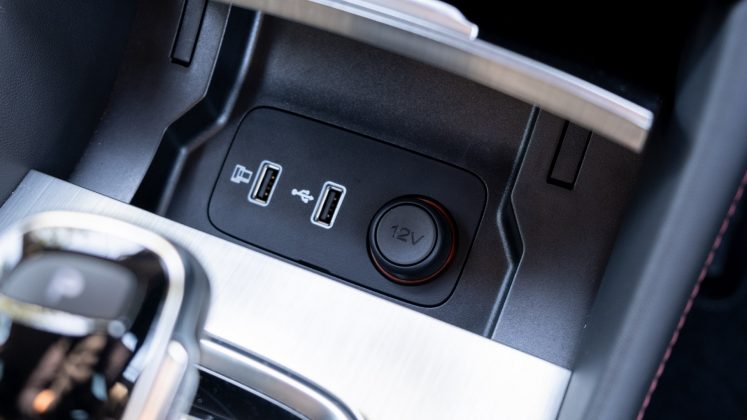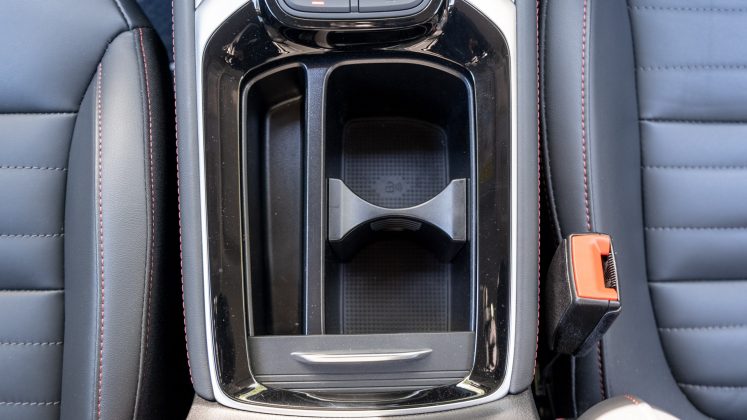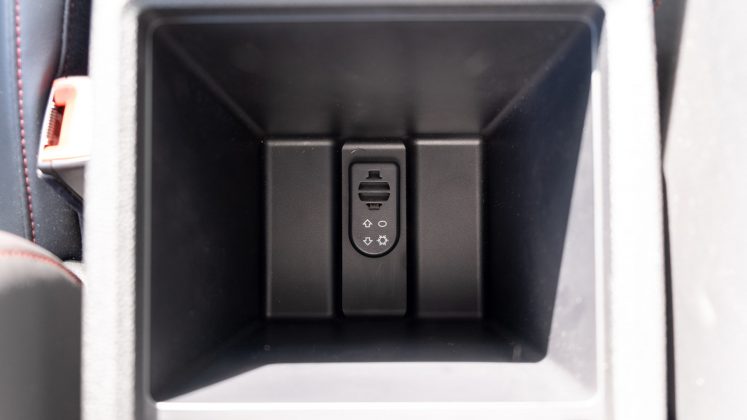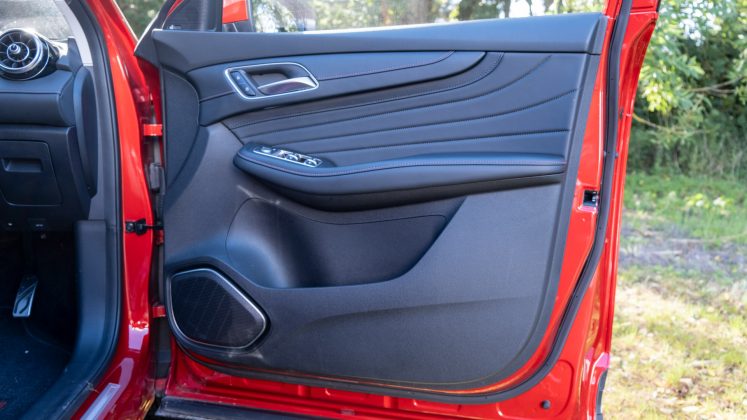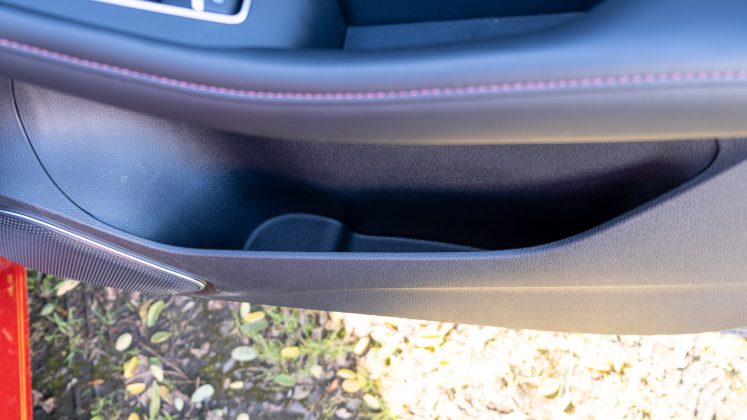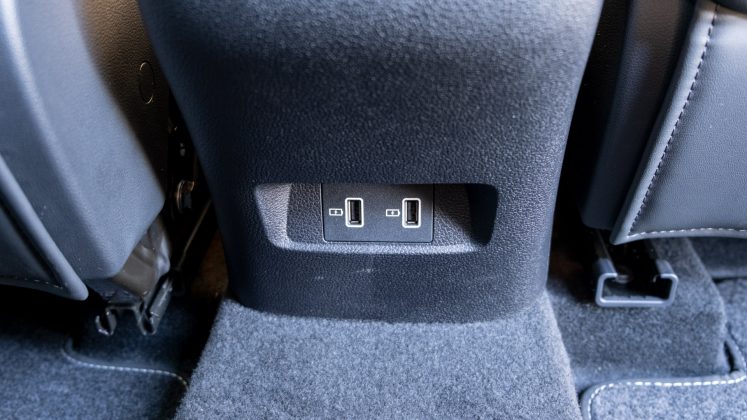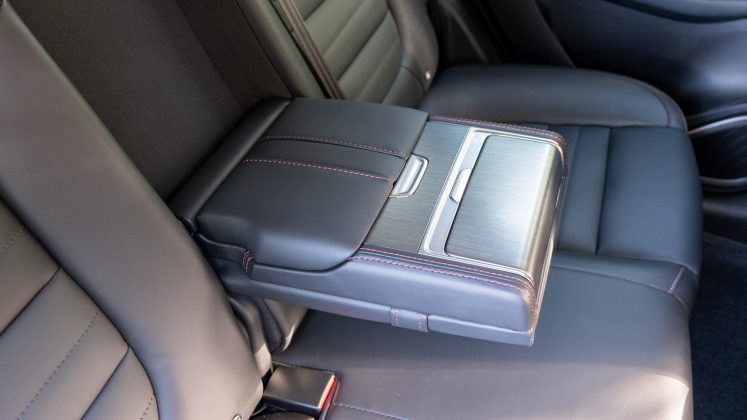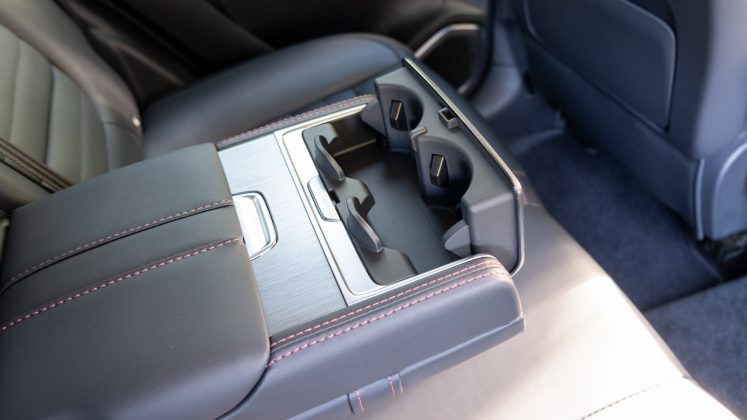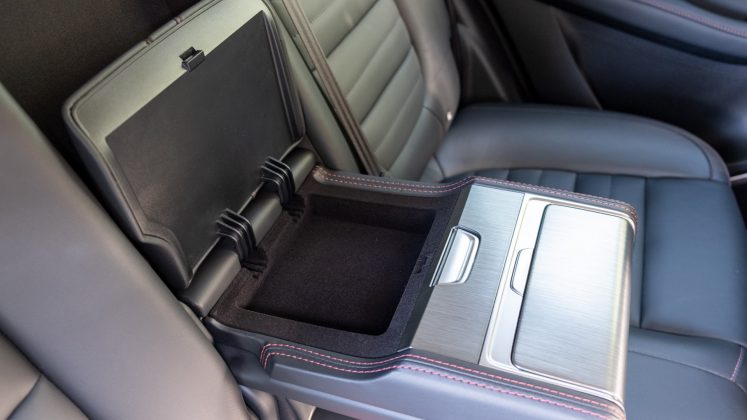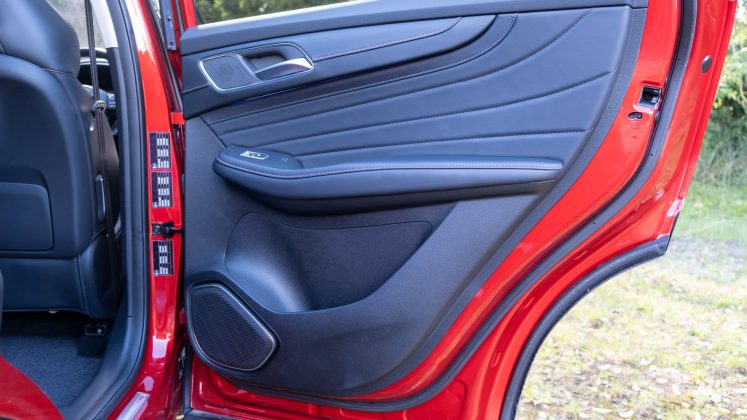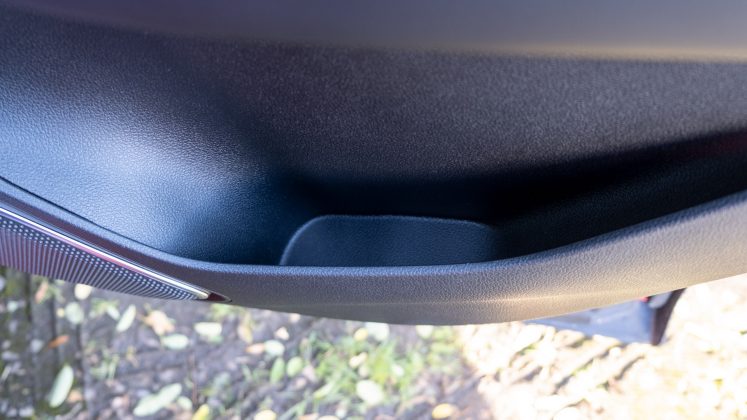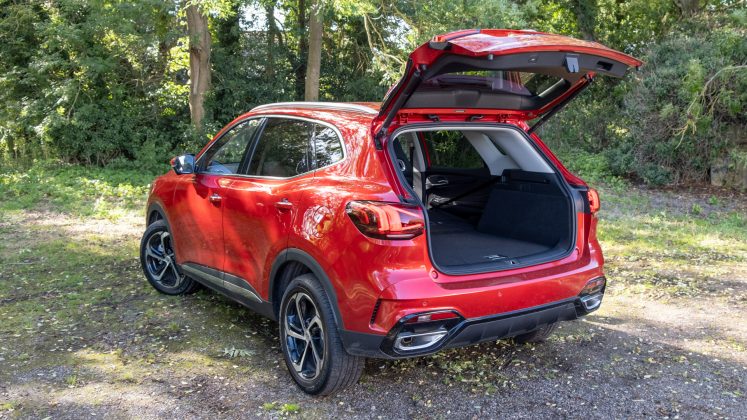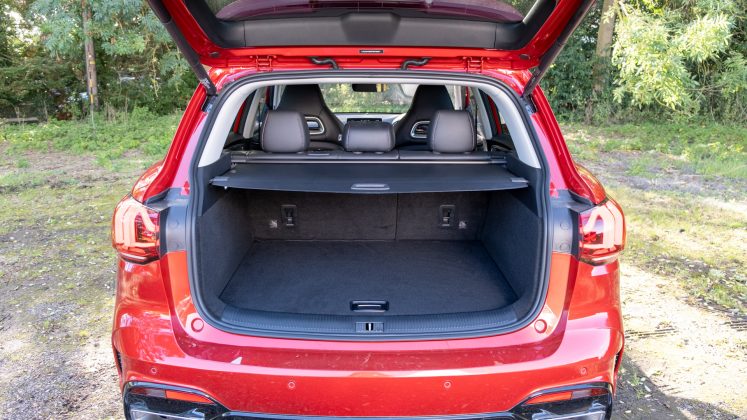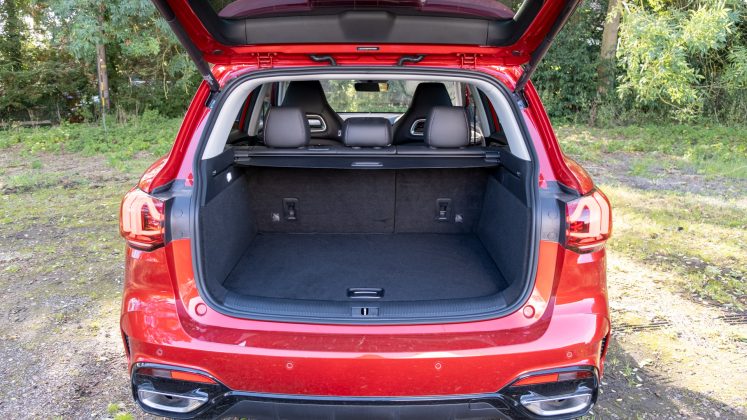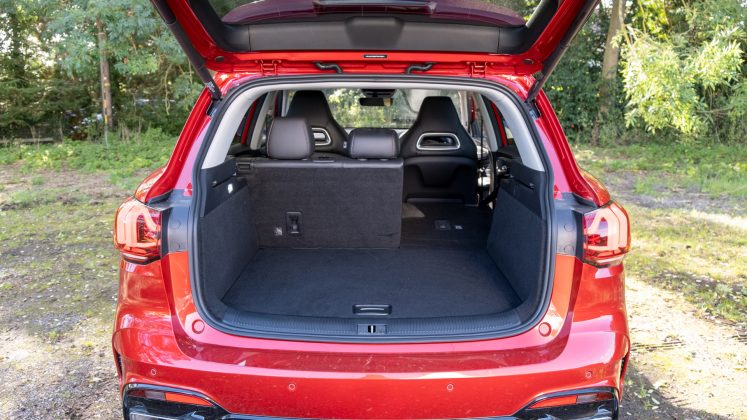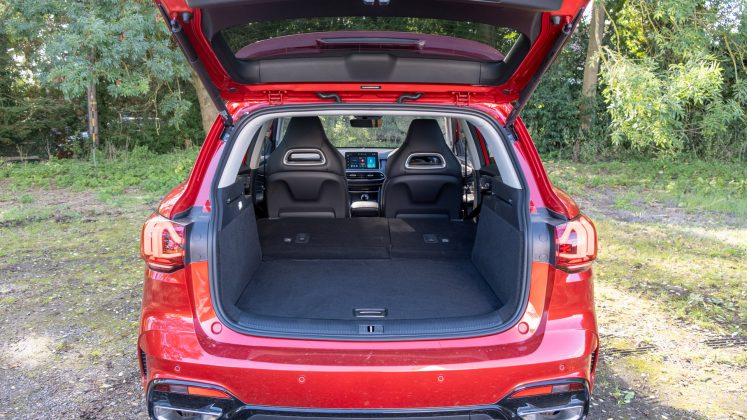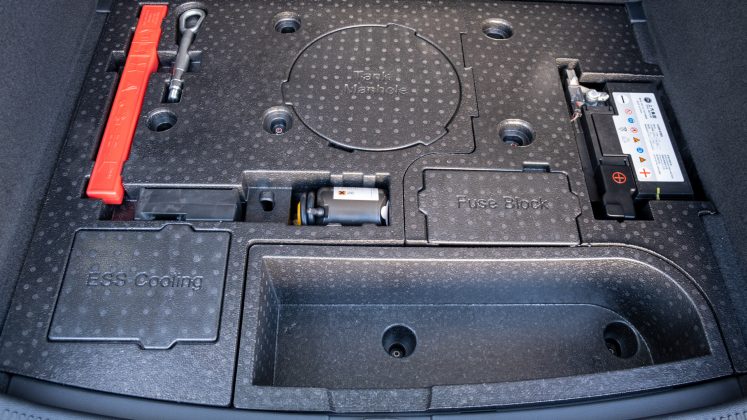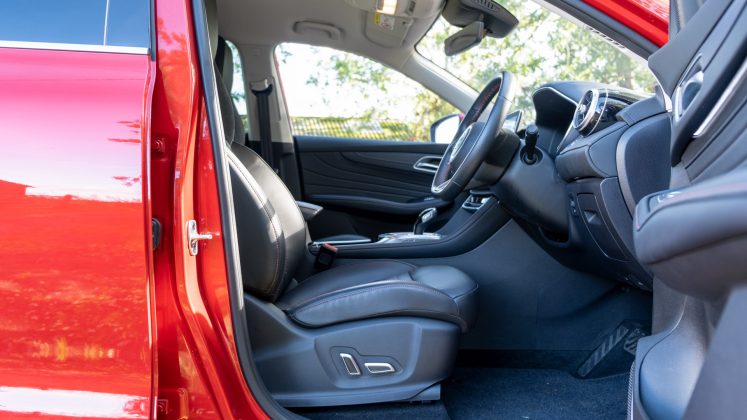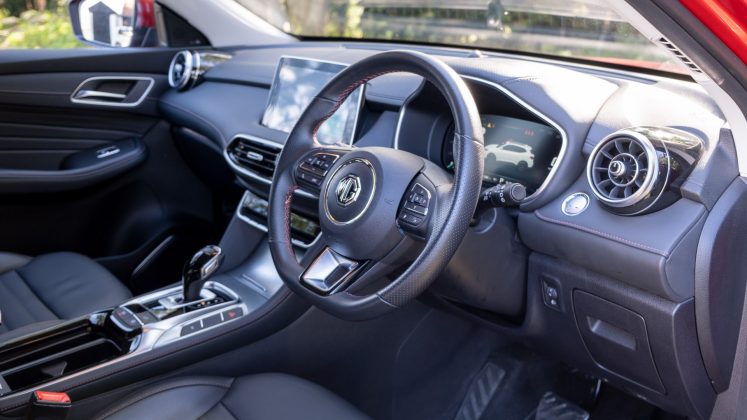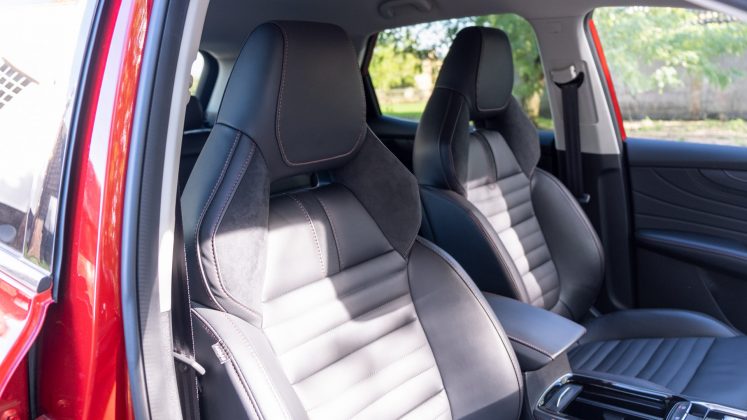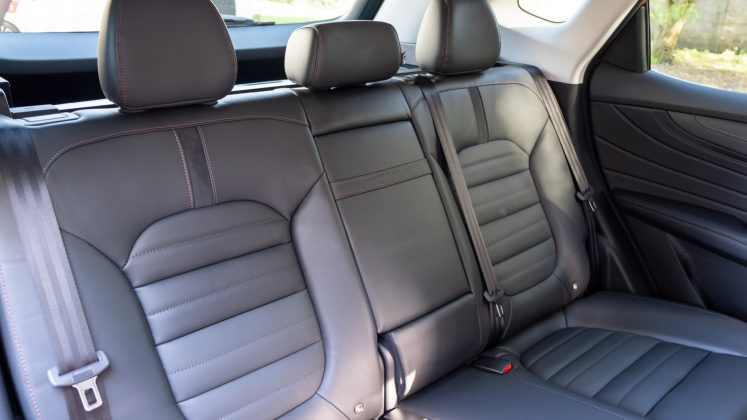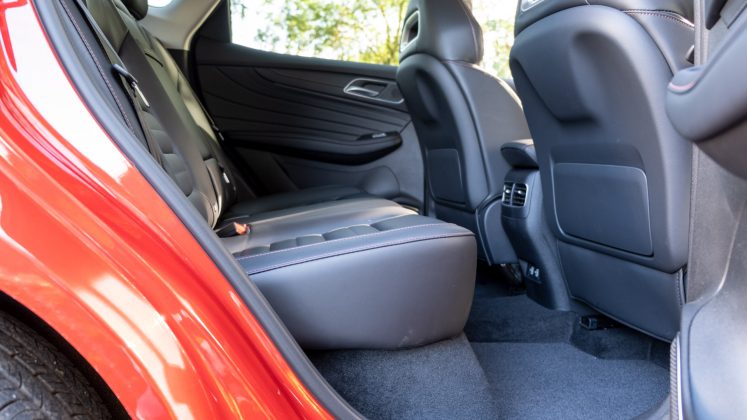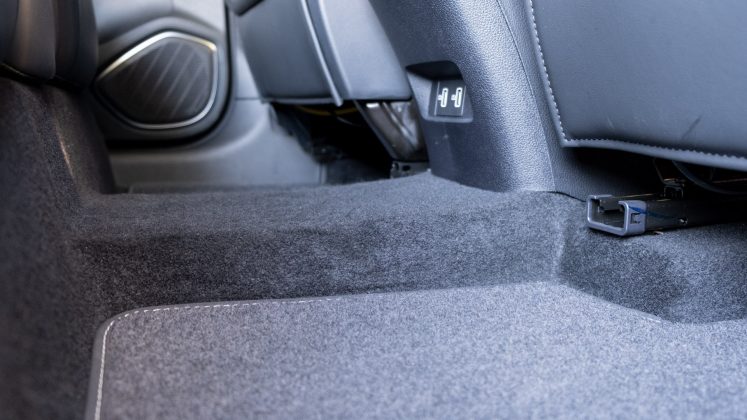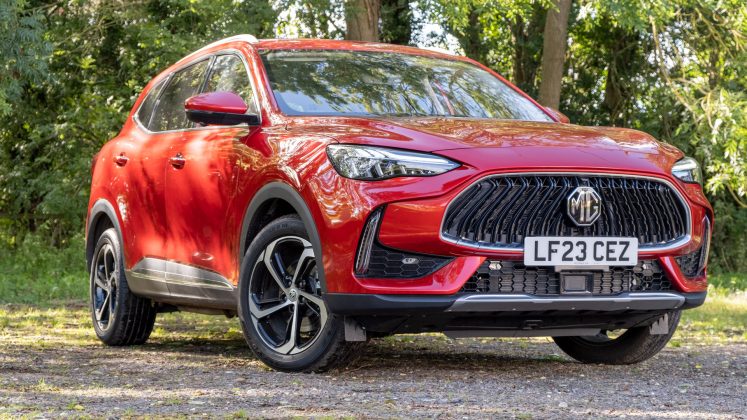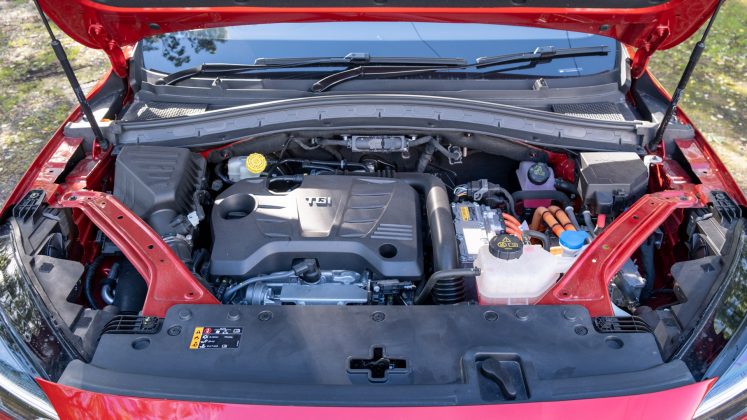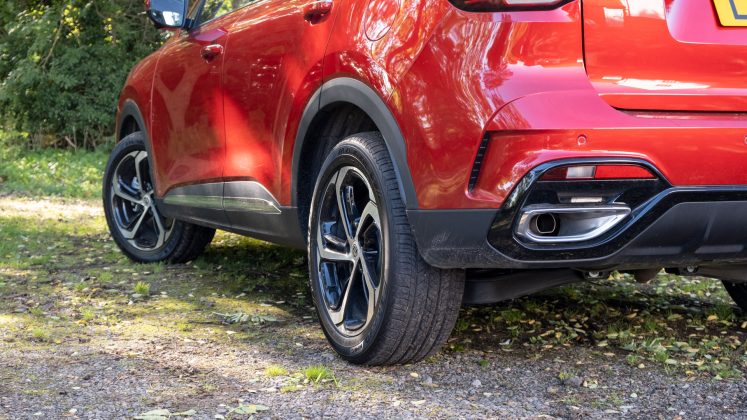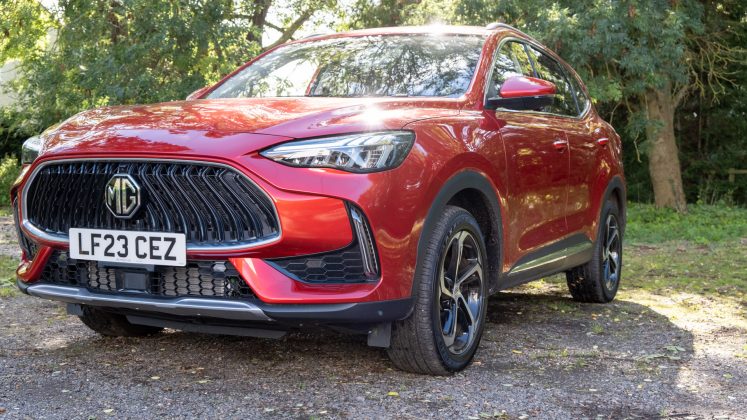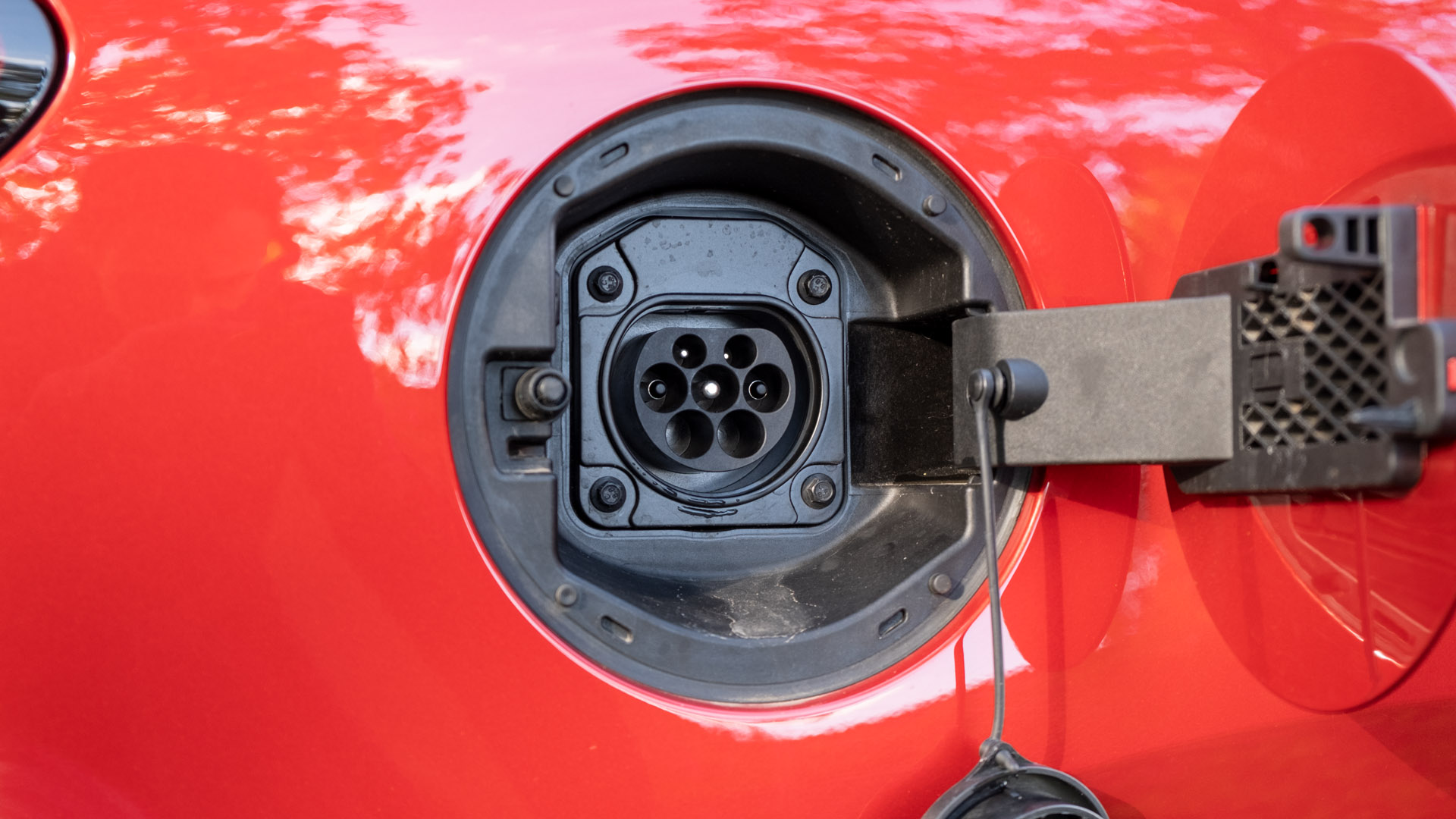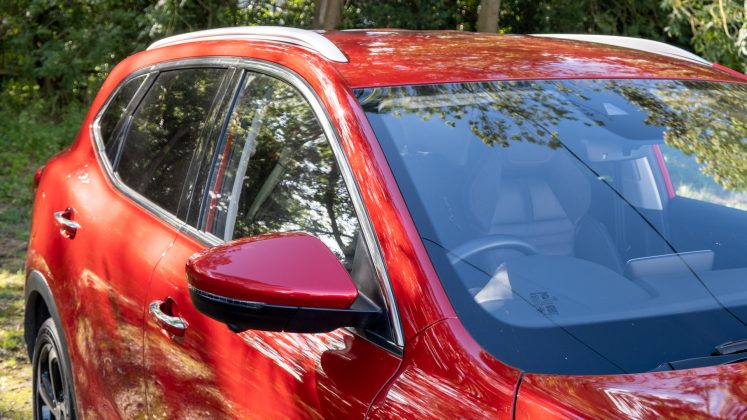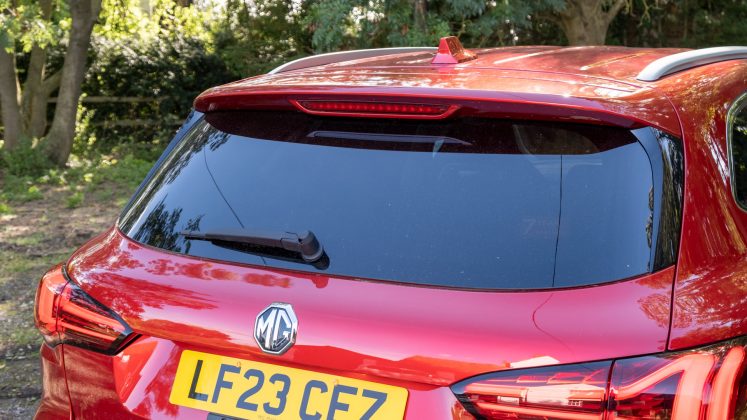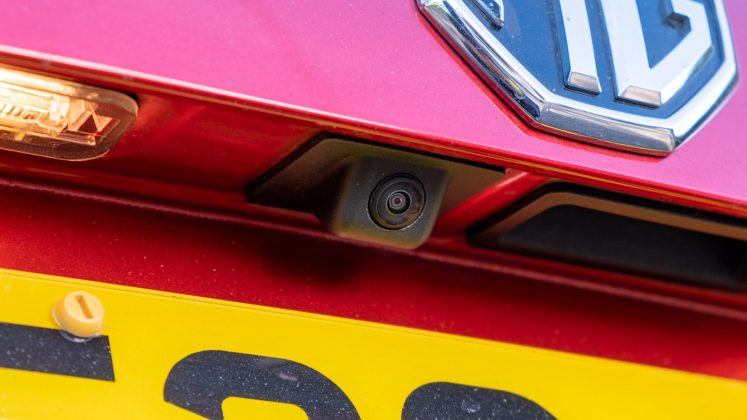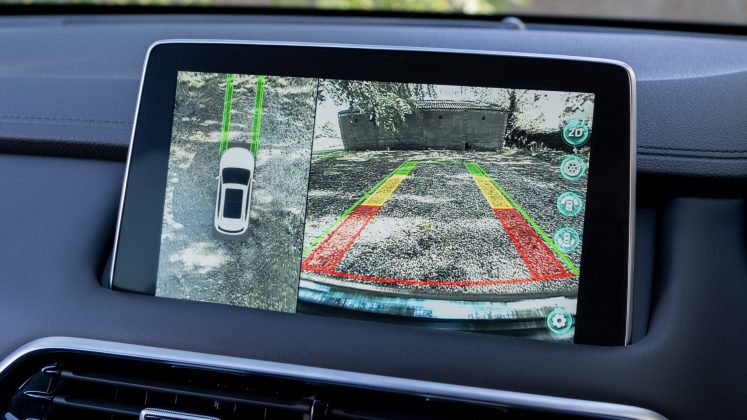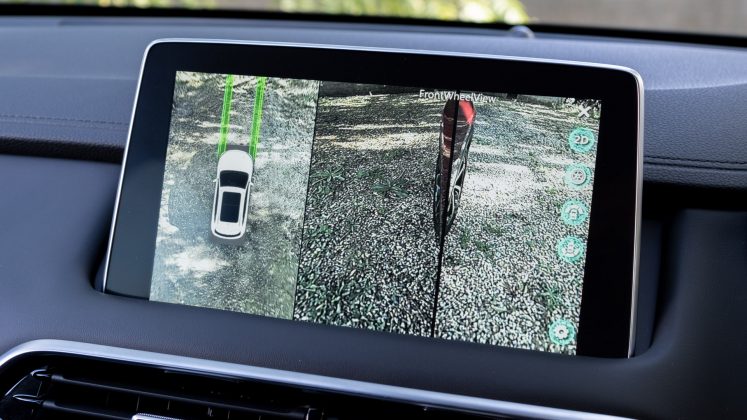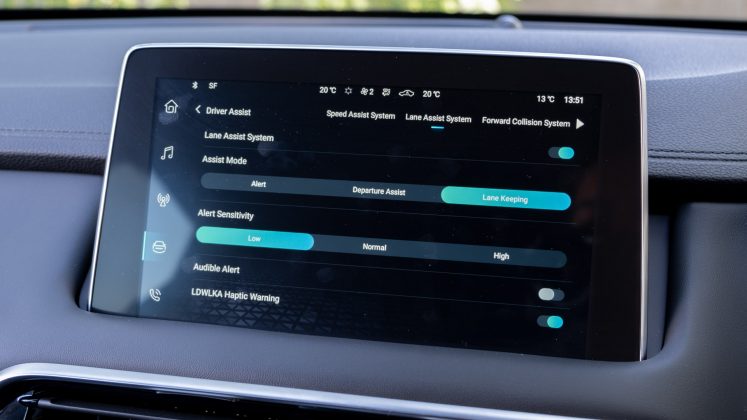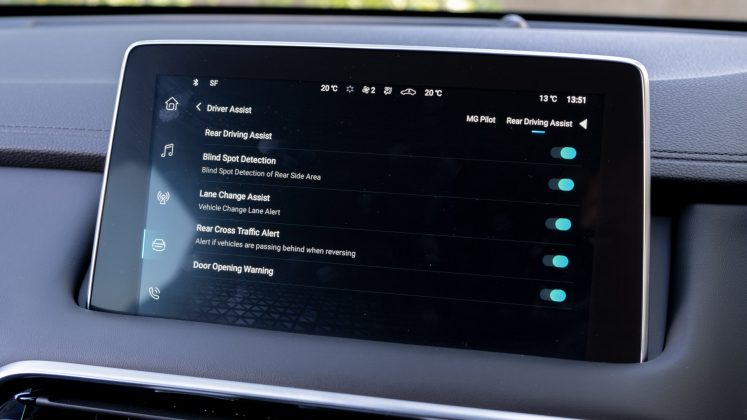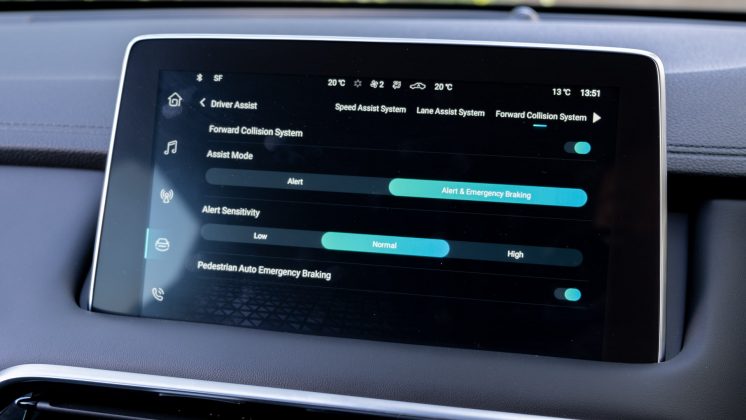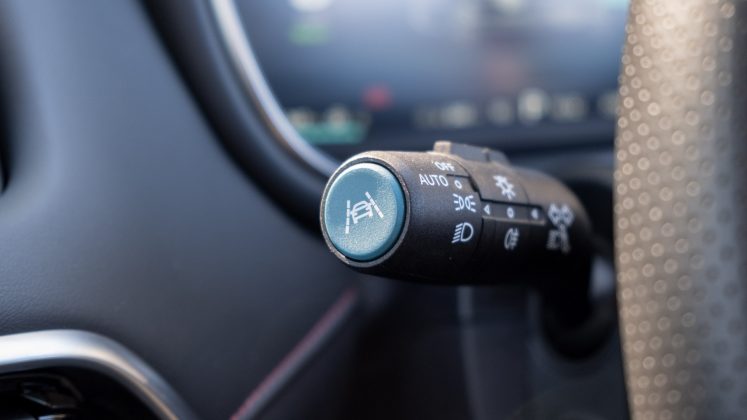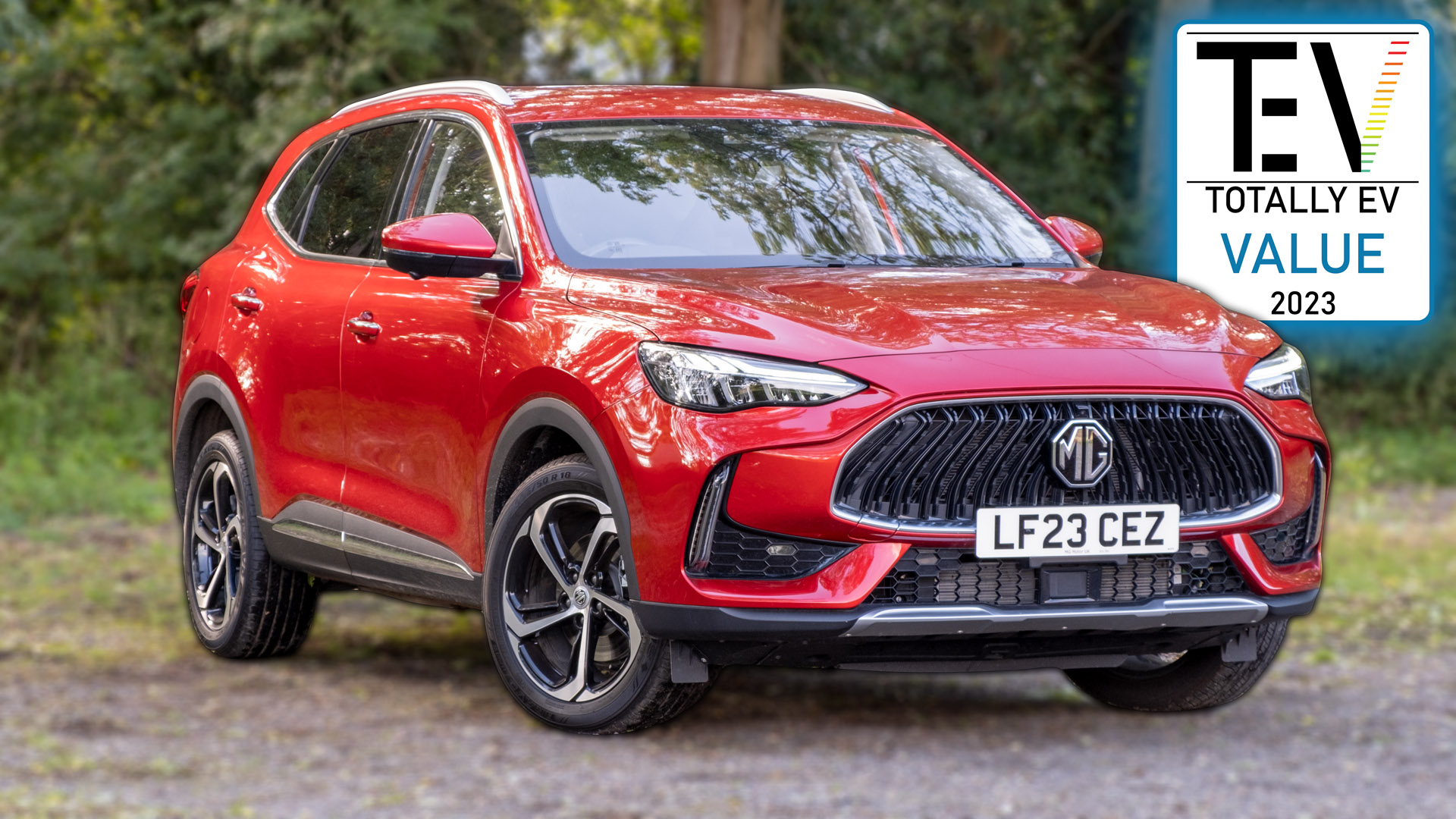The MG HS has been around since 2018 and since its release has proven to be popular among consumers who want a practical and affordable SUV. In September 2020, the facelift model made its first appearance at the Auto China show in Beijing. It didn’t come to Europe and the UK until mid-2023.
If you’d prefer to watch a review of the MG HS Plug-In Hybrid, head on over to our YouTube channel.
MG HS PHEV price & competition
At the time of writing and in the UK, the HS PHEV is available in two trims: SE at £31,095 and the Trophy that we have on review at £33,595. That’s a notable price hike over the regular petrol model that starts from £23,495 and rises to £27,995 for the top-spec configuration.
A breakdown of the differences can be found below (click to expand):
Find the best MG HS PHEV deals
As for the competition, there are quite a few hybrid SUVs to consider: the Nissan Juke Hybrid from £27,250; Honda HR-V from £30,695; Nissan Qashqai e-Power from £34,020; Peugeot 3008 Hybrid from £34,180; Citroen C5 Aircross from £36,875; Nissan X-Trail e-Power from £36,965; Citroen C5 X Hybrid from £38,220; Cupra Formentor e-Hybrid from £39,895; Peugeot 408 Hybrid from £40,450; Kia Sportage PHEV from £40,545; Ford Kuga PHEV from £40,555; Hyundai Tucson PHEV from £41,930; Range Rover Evoque P300e PHEV £49,000; Suzuki Across Hybrid from £49,529; Audi Q5 TFSIe from £55,105; and the BMW X3 xDrive30e from £56,515.
Buy a car phone mount on Amazon (Affiliate)
You might also want to consider a few of the fully electric alternatives: the MG ZS EV from £30,495; Hyundai Kona Electric from £34,995; Kia Soul EV from £32,875; Citroen e-C4 from £30,569; Citroen e-C4 X from £31,610; Peugeot e-2008 from £36,500; Kia Niro EV ‘2 64’ from £37,325; Vauxhall Mokka-e from £37,610; Volkswagen ID.4 from £42,640; Skoda Enyaq iV from £40,585; Hyundai Ioniq 5 from £43,445; BMW iX1 from £44,560; Tesla Model Y from £44,990; Kia EV6 from £45,275; and the Audi Q4 40 e-tron from £50,745. You’ve also got the MG5 EV, an all-electric estate that starts from £30,995, and the Smart #1, a crossover that starts from £31,950.
Read next: Hyundai Tucson review: Is the plug-in hybrid worth it?
MG HS PHEV exterior review
Despite its competitive price, the new HS plug-in hybrid looks the part. The facelift model has an elongated nose with stylish headlights and an attractive grille. From the side, you’ve got 18″ diamond-cut alloys with a small plastic insert around the wheel arches and side skirts. As for the rear, it has soft curves, fancy-looking taillights that match the rest of the vehicle’s design and even real outward-facing exhaust tips, which are quite a rarity in modern SUVs.
For your colour options, ‘Holborn Blue’ comes as standard. ‘White Pearl’, ‘Black Pearl’, ‘Urban Grey’ and ‘Cosmic Silver’ cost an additional £545 while ‘Dynamic Red’ costs £695. When it comes to towing capacity, the MG PHEV is rated at 1,500kg and 750kg for braked and unbraked trailers, respectively. As for its roof, it can take up to 50kg.
Read next: Cupra Formentor e-Hybrid review: Better than BMW X2?
MG HS PHEV interior review
Inside, the MG might not be able to compete with more premium alternatives but it certainly does look the part. It also has a very practical interior design, with physical buttons on the steering wheel and a flurry of them located by the centre console. Unfortunately, the Chinese automaker has removed the physical temperature controls and moved them to the infotainment system; thankfully there are a few physical shortcut buttons situated underneath the 10.1″ display.
The centre-weighted screen has had a much-needed refresh with modern graphics elevating the user experience. However, the system is still quite slow to respond to input with transitions being painfully slow. With that said, it might be a non-issue, as you might just resort to using Android Auto and Apple CarPlay, which are both supported over a wired connection only. It’s a shame that they don’t work wirelessly and further, don’t integrate turn-based navigation data to the 12.3″ instrument cluster. Equally, it would have been great to see a Head-Up Display (HUD) available as an option or even featured in the more expensive Trophy spec.
There is also no means of upgrading the stock 240-Watt six-speaker audio system. This might come as a disappointment to audiophiles as the configuration is a bit lacklustre. Still, it’ll suffice for the average listener. If you’d like to hear how it sounds, watch our detailed review on YouTube.
MG HS PHEV storage review
When it comes to storage, the new MG HS is excellent within the cabin. At the front, you’ve got a sizable glove box, large door bins that’ll accommodate a 500ml bottle alongside small-sized valuables, a retractable area by the centre console that’ll fit a smartphone and two coffee cups, and an area within the centre armrest that is air-conditioned – a nice touch by the automaker. Underneath the front flap, you’ll find two USB Type-A ports, one of which is used to connect to the infotainment system and a 12V socket.
At the rear, there are a further two USB Type-A ports used for charging only. Unsurprisingly, the door bins at the back of the cabin are a bit more limited but still plentiful, and there’s even a very snazzy pulldown armrest compartment, which reveals two cupholders and a small area to store small-sized valuables.
As for the boot, there’s 448 litres in the PHEV model, which is down from 463 litres from the regular petrol model. With the seats dropped, this figure extends up to 1,375 and 1,454 litres, respectively. Granted the PHEV model has less storage than its petrol counterpart, but it’s still a large area that should suffice for your weekly shops.
Here’s how the it stacks up to other electrified SUVs: Land Rover Discovery Sport P300e (1,179/1,794 litres); Tesla Model Y (854/2,100 litres); Skoda Enyaq iV (585/1,710 litres); Hyundai Tucson PHEV (558/1,737 litres); Kia Sportage PHEV (540/1,715 litres); VW Passat Estate GTE (483/1,613 litres); VW ID.4 (543/1,575 litres); Hyundai Ioniq 5 (520/1,587 litres); Skoda Octavia iV Estate (490/1,555 litres); Citroen C5 X Hybrid (485/1,580 litres); Peugeot 408 Hybrid (485/1,545 litres); Citroen C5 Aircross (460/1,510 litres); Nissan X-Trail (485-575/1,298-1,386); Kia EV6 (490/1,300 litres); MG ZS EV (448/1,375 litres); Peugeot e-2008 (434/1,467 litres); Range Rover Evoque P300e (591/1,383 litres); Nissan Qashqai e-Power (455/1,379 litres); Kia Soul EV (315/1,339 litres); Cupra Formentor e-Hybrid (345/1,475 litres); Suzuki Across Hybrid (490/1,168 litres); Citroen e-C4 (380/1,250 litres); BMW X2 xDrive 25e (410/1,290 litres); Nissan Juke Hybrid (354/1,237 litres); Honda HR-V (320/1,290 litres); Hyundai Kona Electric (332/1,114 litres); Vauxhall Mokka-e (310/1,060 litres). As for the MG5 EV estate, it offers 479 and 1,367 litres, respectively.
In terms of practicality, the HS PHEV has 60:40 rear-split folding seats, a small underfloor compartment with an area for you to store the vehicle’s charging cable, a flat loading bay when the seats are folded and there’s a wide-opening hatchback tailgate, which becomes electronically-operated in the Trophy model.
Read next: Skoda Enyaq iV review: The Volkswagen ID.4 alternative
MG HS PHEV comfort review
Despite the addition of a battery pack at the rear of the vehicle, the PHEV model doesn’t compromise on occupancy space. Both headroom and legroom are excellent throughout the cabin with 6-foot 2-inches (188cm) individuals able to be accommodated without any issues. Better still, the transition tunnel has been kept down to a minimum, which allows the rear middle occupant to sit without much discomfort.
In fact, the rear seats can even recline. While we can’t quite see the point, it’s still great to see that the automaker has optimised the HS PHEV. Speaking of which, the driver’s seat has 6-way electronic control and manual lumbar support, while the passenger seat has 4-way manual controls in the SE trim and electronic adjustments in the Trophy spec. Heated front seats come fitted as standard but unfortunately, the steering wheel can’t be warmed up on colder days.
Find the best MG HS PHEV deals
As for the seats themselves, they’re all accommodating and soft, with leather-style upholstery present in the SE trim and leather available in the Trophy model. Black and red stitching can be added for an additional £500. The only real negative is that there is no panoramic glass roof available even as an option, which would have been a great addition at this price point.
When it comes to cabin noise, the HS PHEV is competent at blocking out exterior noise. Although there is still some road noise that creeps in from the tyres and wind noise that can be heard deflecting off the A-pillars. Detailed sound measurements that we recorded in the cabin can be found in our dedicated audio review.
Read next: Volkswagen ID.4 review: Better than the VW ID.3?
MG HS PHEV performance review
Complementing the vehicle’s serene interior is its soft suspension system. It soaks up a lot of the road’s anomalies and allows you to glide over speed bumps. There’s also no low-end resonance that can be heard when traversing uneven terrain; a phenomenon experienced in the MG ZS EV.
Given its softened configuration, it’s no surprise to learn that the SUV suffers from body roll. When cornering at speed along the country roads the vehicle rocks from side to side. It’s also quite apparent that it isn’t made for spirited driving, as Sport mode is missing altogether while steering input feels disjointed. It’s no match with sportier alternatives, such as the Cupra Formentor e-Hybrid and BMW X2 xDrive 25e.
Equally, its 10-speed automatic gearbox (six for the engine and four for the electric motor) is lazy. Gear changes are sloppy and fail to engage rapidly on a kick-down. Still, it’s by no means a slouch with the 1.5-litre 4-cylinder T-GDI engine that combines with the 90 kW electric motor to send 190 kW of power (255 hp) and 370 Nm of torque to the front wheels only (FWD); there’s a minimal amount of torque steer (front wheel spin) when full power is applied. Tested using Racelogic’s Performance Box Touch, we clocked in 0-20mph in 2.28s, 0-30mph in 3.37s, 0-60mph in 7.45s (slower than the manufacturer’s claim of 6.9s) and from 50-70mph in 3.93s. Top speed is electronically limited to 118mph.
Buy a car phone mount on Amazon (Affiliate)
Its performance might not be electrifying but we can’t see many wanting to drive like a boy or girl racer in the HS PHEV. What will be of importance, however, is fuel economy. Here, there is a 37-litre fuel tank that combines with a 16.6 kWh battery pack to provide roughly 275 miles of driving range; 25 miles can be achieved in pure electric mode (claimed at 32 miles by the manufacturer).
In our mixed driving tests, we netted 40-45 MPG, which is a respectable figure albeit not an impressive one for a PHEV. For context, here’s how it compares to its competitors: the Citroen C5 X Hybrid and Peugeot 408 Hybrid attained 70-75 MPG, the Cupra Formentor e-Hybrid attained 64 MPG, the VW Passat Estate GTE 60-65 MPG, Kia Sportage PHEV 60-65 MPG, the Citroen C5 Aircross Hybrid 58 MPG, the Suzuki Across Hybrid 55-61 MPG, the Skoda Octavia iV Estate and Honda HR-V 55 MPG, the Nissan Qashqai e-Power 50-53 MPG, the Hyundai Tucson PHEV 42.7 MPG, the Nissan X-Trail 42.6 MPG, the Range Rover Evoque P300e 40 MPG, the BMW X2 xDrive 25e 39 MPG, the Nissan Juke Hybrid 35-40 MPG, the Jeep Renegade 4xe attained 36 MPG and the Land Rover Discovery Sport P300e a measly 35 MPG.
However, unlike many of its competitors, the MG HS PHEV can self-charge. A handy feature if you’re frequenting the motorway, as it can recoup energy while you’re cruising and later be used in an urban environment.
Aside from recharging on the move, you can plug it in. Through its Type 2 port, it can charge from 0-100% in 3 hours, while connected to a 3-pin socket it’ll take 7 hours. Note, that its onboard charger is limited to 7 kW.
Read next: Citroen C5 X review: Hybrid perfection?
MG HS PHEV safety review
When it comes to crash safety, the new MG HS has yet to be tested by Euro NCAP. However, the older model was tested in 2019 and achieved the full 5/5 stars, scoring 92% in Adult Occupancy, 81% in Child Occupancy and 76% in the Safety Assist tests. One can only imagine the newer model also fairing similarly.
As for the driver assistance systems, you get the following as standard: Active Emergency Braking with Pedestrian and Bicycle Detection, Lane Keep Assist (LKA) with Lane Departure Warning System (LDWS), Traffic Jam Assist, Intelligent Speed Limit Assist, Blind Spot Detection (BSD), Rear Cross Traffic Alert (RCTA), Intelligent High Beam Assist and Adaptive Cruise Control.
In our tests, we found that Adaptive Cruise Control was a little jerky, with the HS PHEV failing to regulate the distance to the leading vehicle smoothly. However, it’s great to see this included as standard. As for LKA and LDWS, it’s fantastic that you can toggle these off easily by long-pressing a button on the left stalk; many manufacturers (including MG) require you to have this feature enabled each time you power on the vehicle — having the ability to quickly disable it makes life a lot easier, and saves you from faffing around with the infotainment system.
In terms of parking, visibility at the front, side and rear are all excellent; a rear wiper comes included too. There are rear sensors and 360-degree cameras that come fitted as standard. The resolution and therefore quality of the cameras isn’t great but they’ll suffice to see your surroundings.
Read next: New Honda HR-V review: Best hybrid SUV?
TotallyEV’s verdict on the MG HS Plug-In Hybrid
On the whole, the new MG HS Plug-In Hybrid is an affordable SUV that is comfortable to drive, extremely spacious, and comes equipped with a plethora of tech and driver assistance features. It might not have the best fuel economy nor a lavish interior design but should still be considered when looking for a new vehicle. As such, it receives TotallyEV’s Value award.
Find the best MG HS PHEV deals
What do you make of the MG HS PHEV? Let us know in the comments section below or via social media; we’re on: YouTube, Instagram, Facebook, Twitter and LinkedIn.

